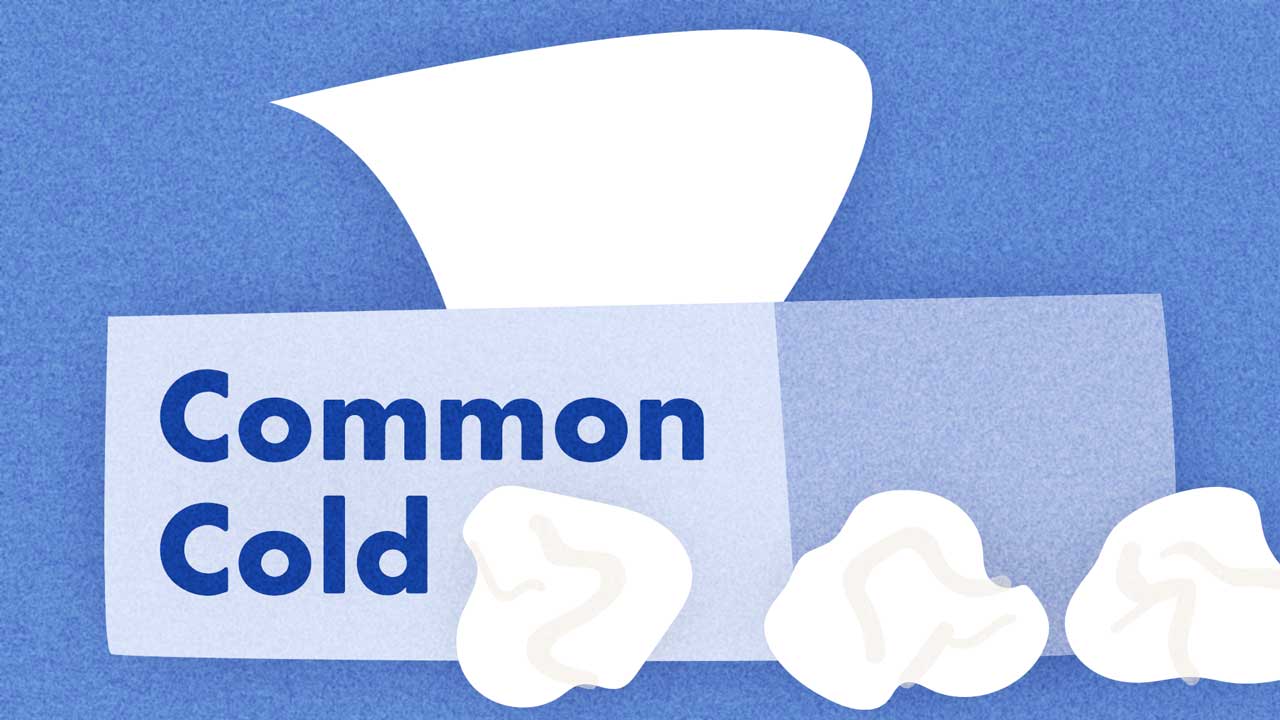As its name suggests, the common cold (or upper respiratory tract infection) is a highly prevalent infection that can be caused by over 200 types of viruses. It affects the nose and throat (Healthdirect 2024).
Most cold-causing viruses belong to either the coronavirus or rhinovirus families (Healthdirect 2024). As there are so many viruses that can cause a cold, it’s possible to have one cold after another from unrelated strains (NHS Inform 2024).
At this stage, it’s not considered possible to be vaccinated against colds due to the number of viruses that can cause them (Herndon 2024).
Prevalence of Colds
The common cold is considered the most common contagious disease in Australia, the most common reason for being absent from school or work, and the most common reason for seeing a general practitioner (Lung Foundation Australia 2022).
Adults will often catch two to four colds per year, while children may get as many as six to eight, as they lack immunity to many of the viruses that cause colds (Healthdirect 2024).

How Colds Are Spread
Colds spread through droplets in the air generated from sneezing, coughing or talking, which enter the body through the eyes, mouth or nose. These droplets may also contaminate objects and surfaces (Mayo Clinic 2023).
Cold-causing viruses can live on hands and surfaces for as long as 24 hours (NHS 2024).
Generally, an individual is contagious from one day before symptoms present and for the first five days of the illness (SA Health 2022).
Risk Factors
The following factors may increase the risk of getting a cold:
- Age: Children younger than six years of age have generally not built up immunity to many cold viruses yet
- Being immunocompromised
- Time of year: People are more likely to catch colds in winter or autumn due to the colder weather bringing people into closer proximity with each other
- Smoking
- Being exposed to large groups of people in settings such as school, aeroplanes etc.
(SA Health 2022; Mayo Clinic 2023; Lung Foundation Australia 2022)
Symptoms of the Common Cold
The onset of symptoms is generally one to three days after exposure to a cold-causing virus. Depending on the individual and the virus, people may experience a combination of the following symptoms:
- Runny or stuffy nose
- Sore throat
- Cough
- Congestion
- Mild body aches
- Headache
- Sneezing
- Red eyes
- Swelling of lymph glands
- Fever (rare in people over the age of three)
- Loss of appetite
- Nausea and vomiting (occasionally)
- Generally feeling unwell.
(Mayo Clinic 2023; Better Health Channel 2022; SA Health 2022)
Thick, yellow or green nasal discharge is common as a cold progresses (Mayo Clinic 2023).

Colds v Influenza
Colds are often confused with influenza (‘the flu’), however, they are different illnesses caused by different viruses (Healthdirect 2022):
- Flu symptoms are similar but more severe than cold symptoms overall.
- The onset of symptoms is gradual for colds and quick (within a few hours) for influenza.
- Colds are unpleasant but most people can still go about their daily lives. Influenza, on the other hand, can make an individual feel too unwell and exhausted to function normally.
- There is a vaccination for influenza but not for colds.
(NHS 2024)
Treatments for Colds
There is no cure or specific treatment for a cold, but symptoms may be managed with the following strategies:
- Medicines to lower fever or ease aches
- Rest and sleep
- Warm drinks to stay hydrated and ease a sore throat
- Nasal drops or spray to ease a blocked nose
- Throat lozenges
- Keeping warm
- Gargling salt water to ease a sore throat.
(NHS 2024; Better Health Channel 2022)
Antibiotics should not be used for colds as they are only effective against bacterial infections (NHS 2024).
Colds are generally not serious and will resolve on their own within a week to 10 days (Mayo Clinic 2023).

Preventing Colds
It’s difficult to avoid getting a cold, but the best way to reduce the risk is to maintain a healthy lifestyle and practise effective hand hygiene (Lung Foundation Australia 2022).
Those who have a cold should try to avoid spreading it to others by:
- Performing hand hygiene as required
- Using tissues when sneezing and disposing of them as soon as possible
- Wiping down frequently touched surfaces.
(NHS 2024; SA Health 2022)
Test Your Knowledge
Question 1 of 3
How many colds does an average adult get every year?
Topics
Further your knowledge
References
- Better Health Channel 2022, Colds, Victoria State Government, viewed 17 March 2025, https://www.betterhealth.vic.gov.au/health/conditionsandtreatments/colds
- Healthdirect 2024, Colds, Australian Government, viewed 17 March 2025, https://www.healthdirect.gov.au/colds
- Herndon, K 2024, Why Is There No Vaccine for the Common Cold?, Verywell Health, viewed 17 March 2025, https://www.verywellhealth.com/why-there-will-never-be-a-vaccine-for-the-common-cold-770451
- Lung Foundation Australia 2022, The Common Cold, Lung Foundation Australia, viewed 17 March 2025, https://lungfoundation.com.au/patients-carers/living-with-a-lung-disease/other-lung-conditions/the-common-cold/
- Mayo Clinic 2023, Common Cold, Mayo Clinic, viewed 17 March 2025, https://www.mayoclinic.org/diseases-conditions/common-cold/symptoms-causes/syc-20351605
- National Health Service 2024, Common Cold, NHS, viewed 17 March 2025, https://www.nhs.uk/conditions/common-cold/
- NHS Inform 2024, Common Cold, NHS Scotland, viewed 17 March 2025, https://www.nhsinform.scot/illnesses-and-conditions/infections-and-poisoning/common-cold/
- SA Health 2022, Common Cold - Including Symptoms, Treatment and Prevention, Government of South Australia, viewed 17 March 2025, https://www.sahealth.sa.gov.au/wps/wcm/connect/public+content/sa+health+internet/conditions/infectious+diseases/common+cold/common+cold+-+including+symptoms+treatment+and+prevention
 New
New 

